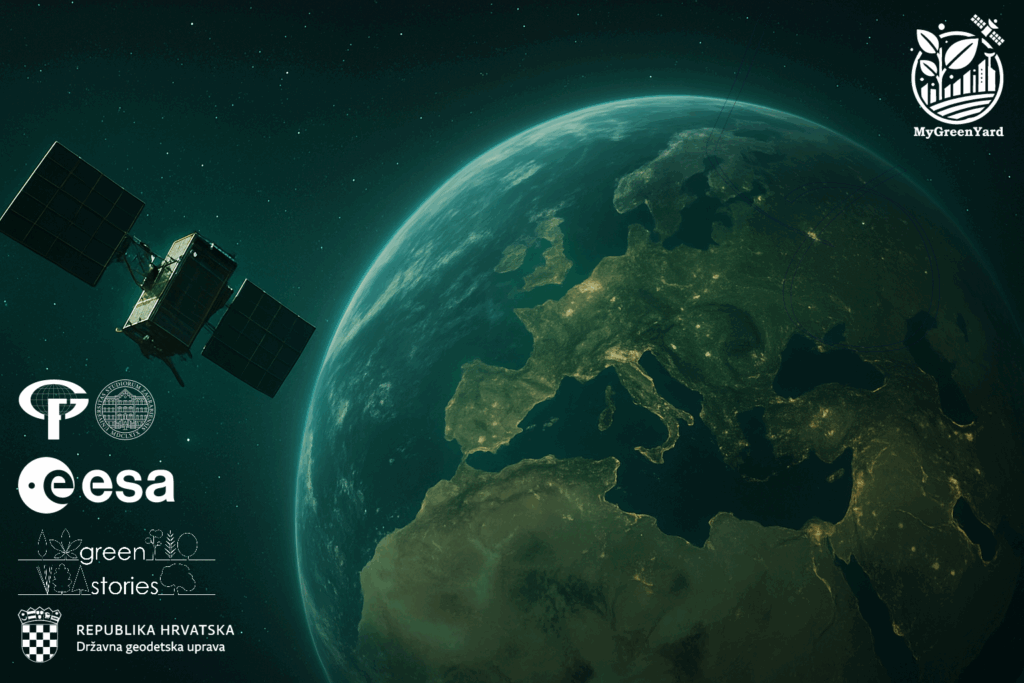
The European Space Agency’s tender approved the project proposal “Ecosystem Services for Green Urban Developmnet and Climate Change Adaptation”. This project proposal is the result of many years of interdisciplinary research in the field of geodesy, geoinformatics and ecology. The project holder is the Faculty of Geodesy, University of Zagreb, with partners from Green Stories Ltd. and the State Geodetic Administration.
Project’s main goals are:
- Design, develop, and demonstrate the Copernicus-based, Earth observation service intended for high-resolution mapping of the urban space and ecosystem functions of the green infrastructure
- Examine and map the needs and requirements in the sector of urban green development and climate change adaptation and assess the potential of Copernicus services products, and EO data to fulfil these requirements
- Design and produce a set of user-approved, general EO-based and Climate data products as the supporting tool for construction of the Green Urban Development plans, Climate change adaptation strategies, and other related needs in urban spaces
There is a strong overall need for the construction of a customized system, based on the Copernicus data sources, that will provide a more precise and explicit evaluation of the structure and ecosystem functions of the green urban infrastructure in particular concerning the future effects of the climate change and their adaptation role in maintaining of the well-being in the near future. There is a need for the evaluation of the usability of existing Copernicus data products and their applicability for the purpose of the construction of urban green development plans. There is also a need for the design and evaluation of new approaches, that will bridge the gap in knowledge about the provisioning capacity of urban vegetation to provide various important ecosystem services which will enhance better decision-making in conducting more green and sustainable spatial planning.
Copernicus services and products, in particular Land Monitoring Service, provide very resourceful spatial information that can be used to determine the structure of urban green spaces and other land cover classes with relatively high precision. On the other side, Climate Change Service provides a broad set of climate-associated data and indicators related to the past observed conditions, future scenarios, Regional Climate Models (RCM), of the climate development in the cities and the potentially expected extreme events. Copernicus remote sensing products, in particular, Sentinel missions provide a vast amount of available data which enables the assessment of structural and functional properties of the land cover at various spatial and temporal scales of observation. By clever integration of the data from the mentioned sources, a more supportive decision-making system for better spatial planning and NDS(National development strategy) realization can be attained.
The development of technologies and the minimization of sensors in the last ten years has led to a great expansion of geodesy and geoinformatics. Scientific areas of geodesy such as remote sensing, photogrammetry, and geoinformatics are expanding their application to other technical fields and many natural and biotechnical (scientific) fields. The Faculty of Geodesy has been conducting scientific research for many years to develop, apply, and disseminate knowledge in the field of space technologies, such as the application of data from the Copernicus program of the European Space Agency. The main goal of the Faculty is to develop new technologies and methods in the field of geodesy and geoinformatics and applications in technical, biotechnical, natural and other sciences, along with the education of students Geodesy. In this way, the way is laid for the geodetic economy and the entire economy to expand the business and create new jobs.
The project is funded by the European Space Agency.
